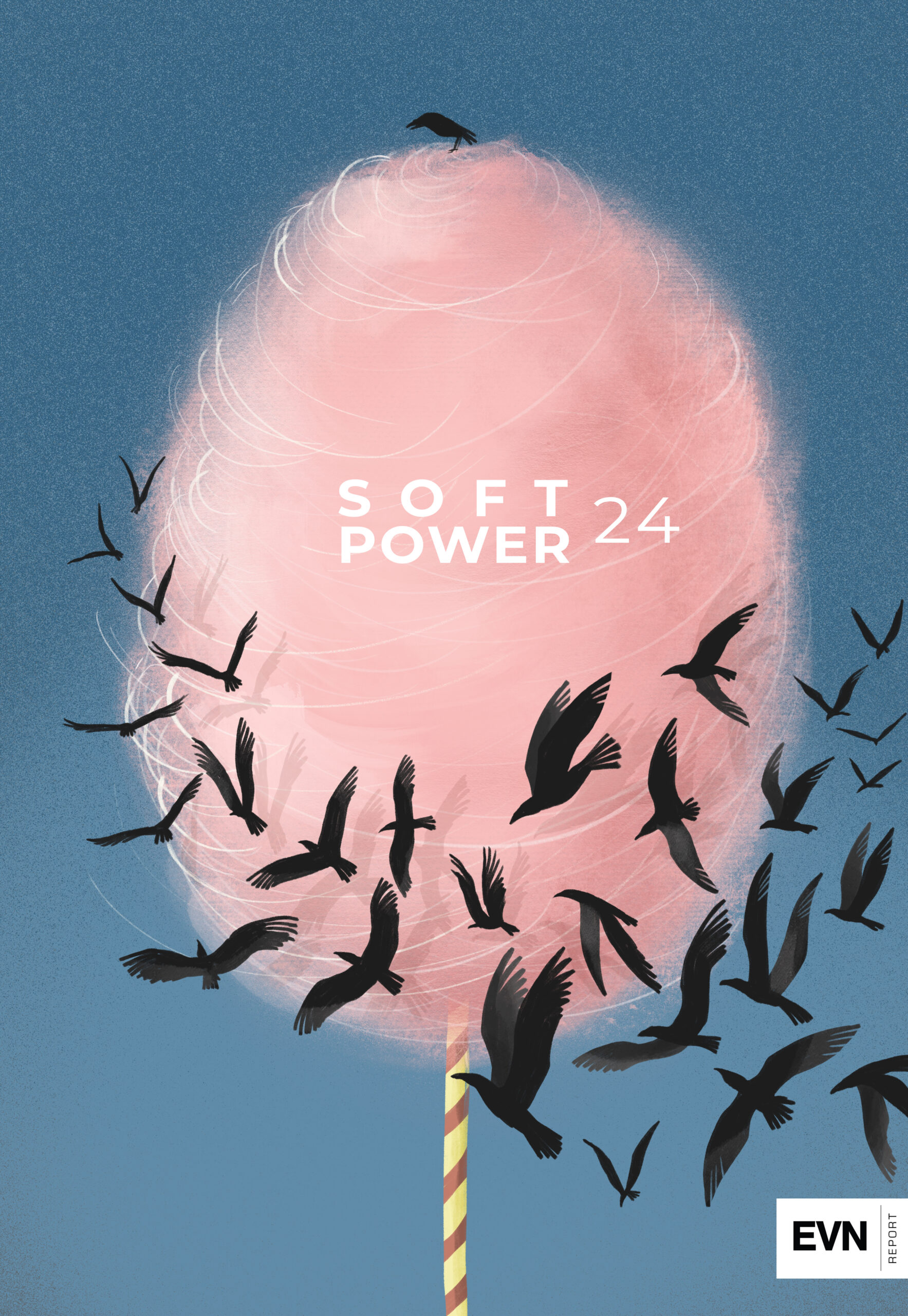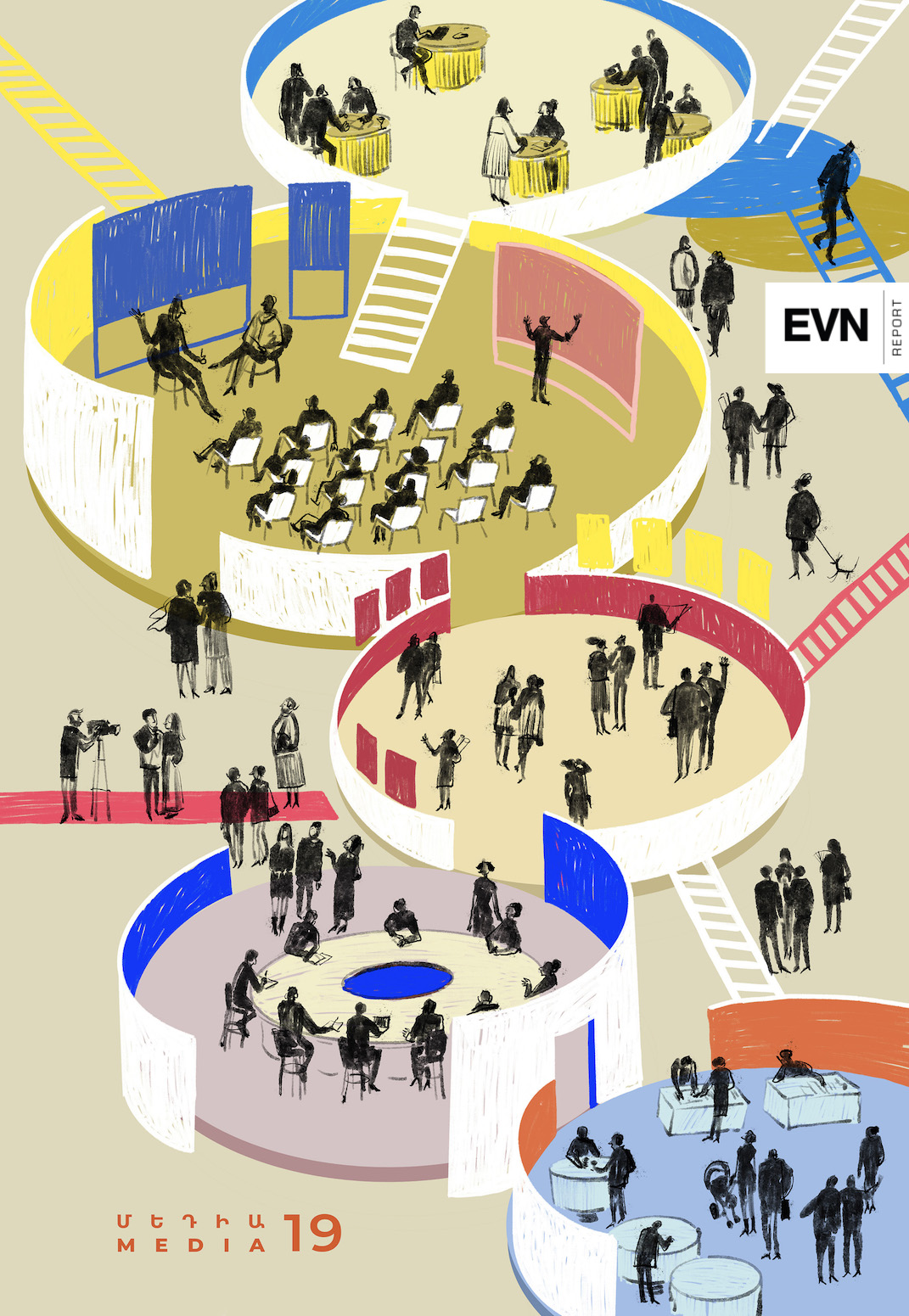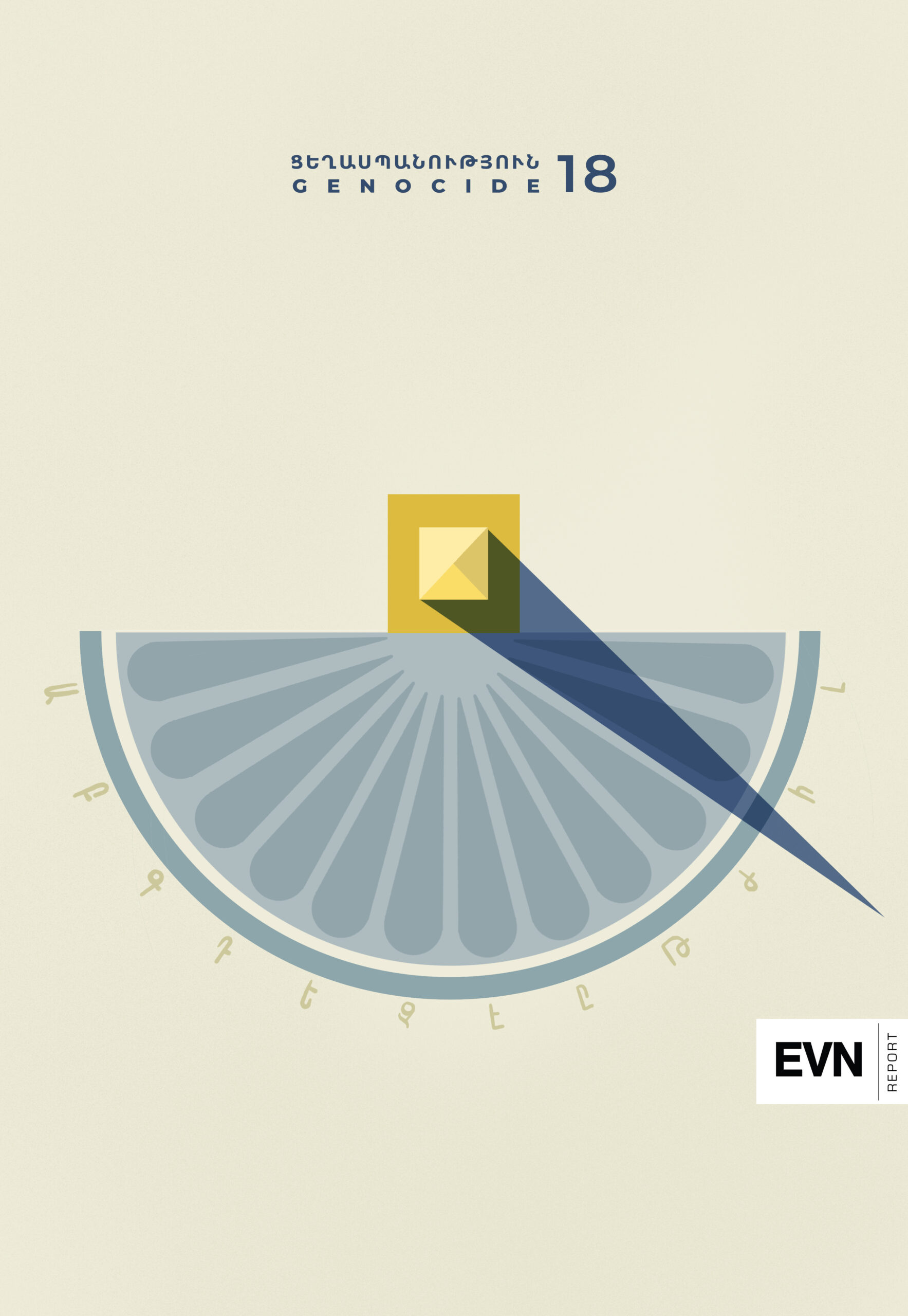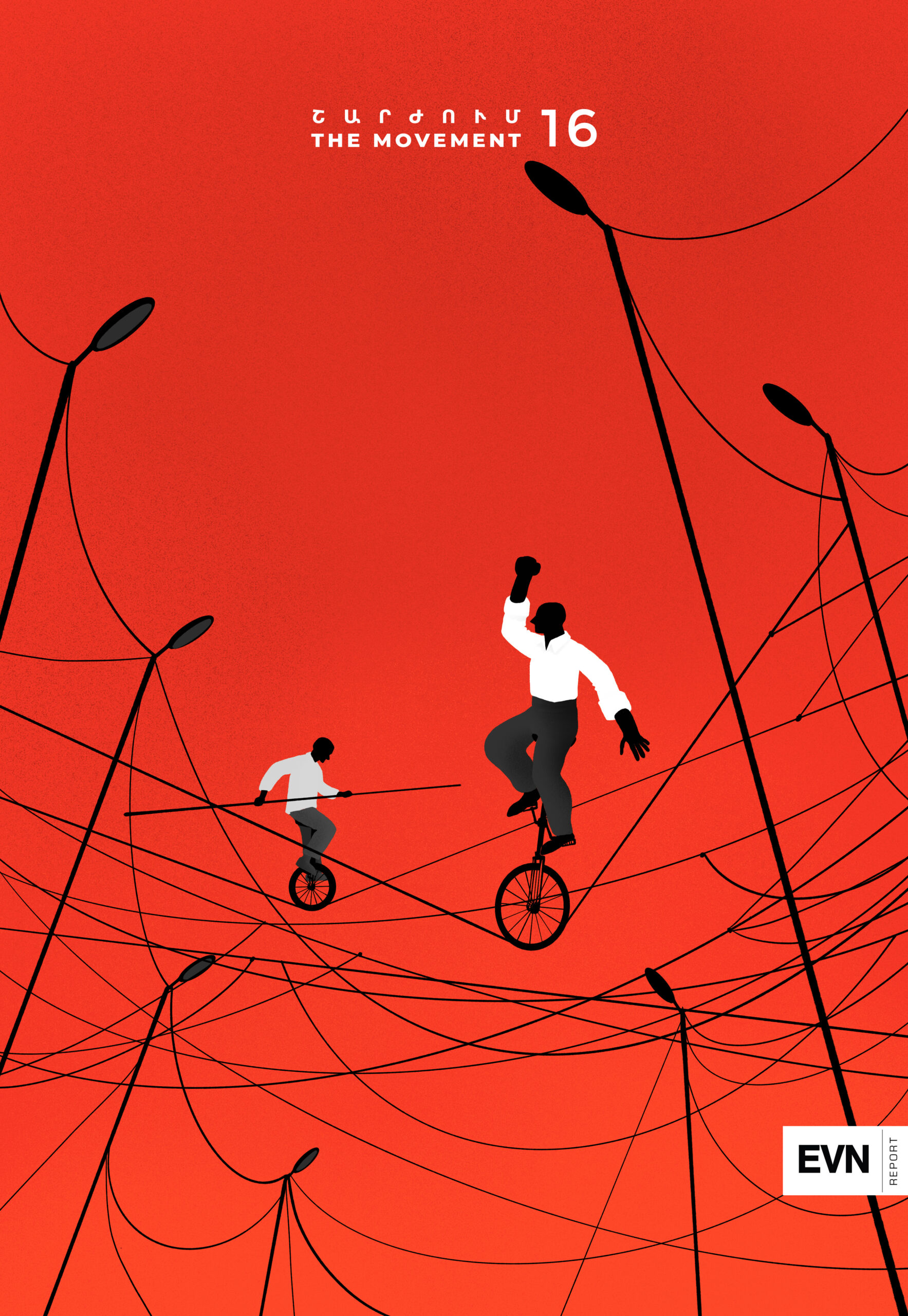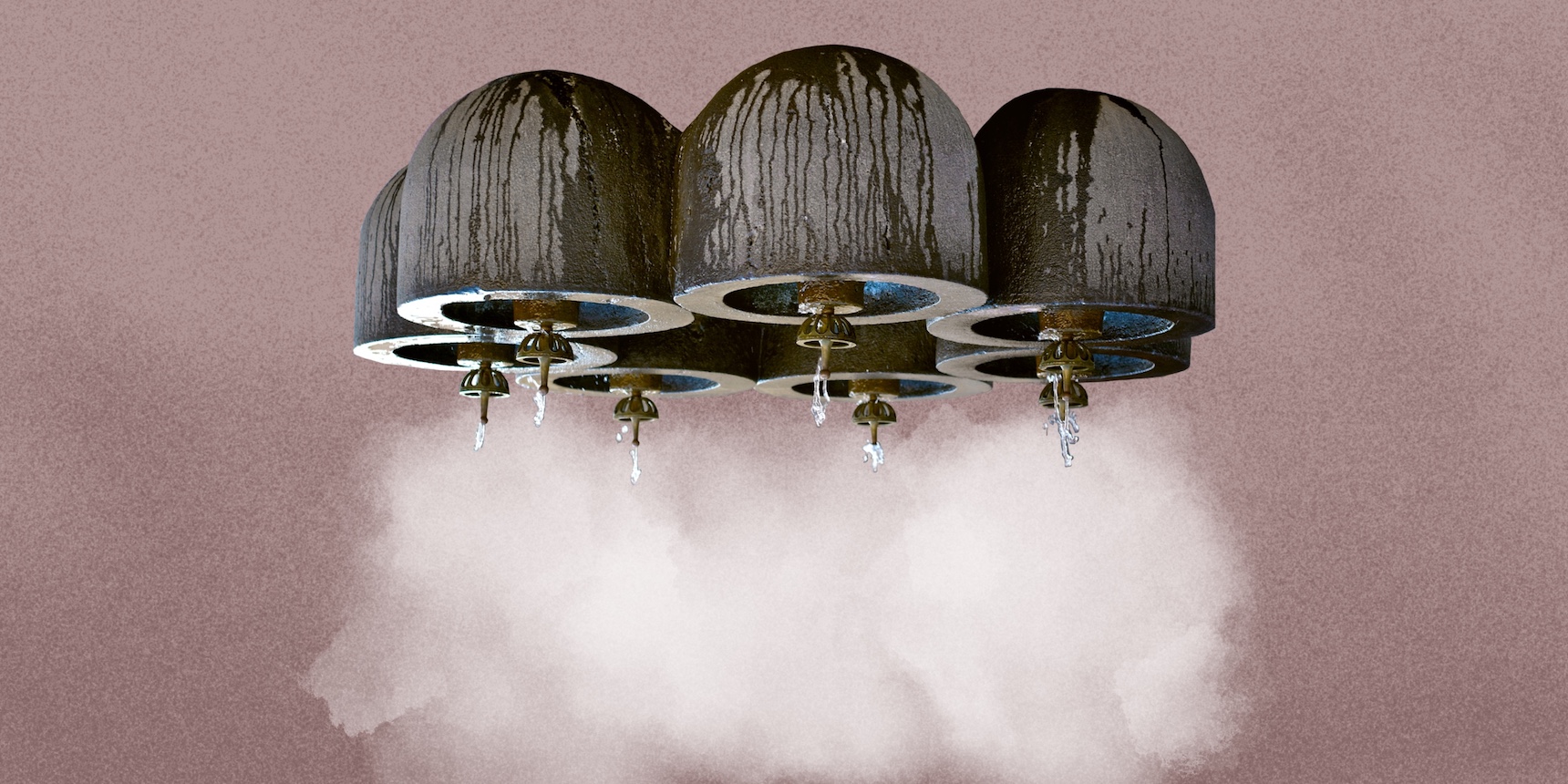
In mid-November, director Inna Sahakyan’s animated docu-drama about the legendary Genocide survivor Aurora Mardiguian, Aurora’s Sunrise, won the prize for best animated feature at the Asia-Pacific Screen Awards – the first Armenian film to receive such an accolade at this prestigious event. Simultaneously, the first vice-president of Azerbaijan, Mehriban Aliyeva resigned from her 18-year reign as a goodwill ambassador for UNESCO. Earlier in November, Armenia’s 2022 Eurovision contestant Rosa Linn made a stunning debut on American live television, appearing on CBS network’s Late Late Show with James Corden performing her hit Snap with traditional Armenian musical instruments. Less visible, but no less important was a November 20th Instagram post by the internationally-prominent Azerbaijani documentary photographer Rena Effendi. Having recently traveled to Gyumri, Effendi had photographed her father’s taxidermist friend, a refugee from Baku, for her series Looking for Satyrus and had these images selected for a special “Pictures of 2022” issue of the National Geographic magazine.
At first glance disconnected, these events are part of a matrix that emerges from cataclysmic socio-political shifts, such as those experienced by Armenia and Azerbaijan since the end of the 2020 war in Artsakh. Entailing a realignment of self-representational and communicative strategies, these processes are negotiational in nature – a consequence of various power structures trying to assert themselves within new systems of political relations. This process of negotiation is what we otherwise call “culture”. At least this how the French philosopher Michel Foucault has famously defined the network of cultural expressions, which according to him stem from the synergies of political struggle.[1]
In the context of ongoing regional strife in the Caucasus, the understanding of culture as an instrument of political agency and negotiation becomes especially vital as a mode of resistance and reinforcement for all the parties involved. Facing the fallout of the 2020 Artsakh War, both Armenia and Azerbaijan have been recalibrating their long-term tactics of cultural strategizing as a means of validating geopolitical claims in the global arena. In either instance, culture has been actively plugged as an aggregator of “soft power”.
A term coined by political scientist Joseph Nye in 1990 to indicate the nature of post-Cold War politics after the fall of the Berlin Wall, “soft power” alludes to an ambivalent methodology that has its roots in the expansionist policies of Greco-Roman Empires that were later refined by the industrial-age colonialism.[2] Trading on civilizational advancement, major political regimes have often resorted to technological innovation and cultural emancipation as a means of enforcing their ideologies and economic interests in the surrounding regions. Hence, there is not a little truth to the common saying that America won the Cold War not through its military prowess but with a pair of blue jeans.
As a means of co-opting desired political outcomes without exercising brute force, the application of culture as soft power is inextricable from and vital to the machinations of Realpolitik today. But to what extent can the recent developments on the Armenian and Azerbaijani cultural landscape be defined as “strategies” of soft power, and what do Rosa Linn or Rena Effendi have anything to do with it?
While Aliyev regime’s pompous, swaggering tactics of cultural diplomacy are transparent in their affected attempts to transform Azerbaijan’s public image and ingratiate it within international systems of power, the haphazard and usually reactive policies employed by current and past Armenian governments are evidently more vague and undecided. The primary reason behind this, arguably, lies in the entrenched perception of Armenian culture as a providential and consecrated entity to be safeguarded at all costs – especially from exterior forces. Ironically, this conservational rhetoric – one that diametrically opposes Foucault’s view of culture as a dynamic network of negotiations – is the very thing that threatens the vitality of Armenian culture and impedes its role as an agent of political will.
Killing You Softly: The Rhetoric of Azerbaijani Cultural Emancipation
Even a superficial comparison between these two competing factions indicates the degree to which Armenia lags behind its hostile neighbor in the tactical instrumentalization of culture as soft power. From the early 2000s onwards Azerbaijan developed a programmatic and long-term plan of reinforcing its cultural credentials through multi-vector
affiliations with venerated research and educational institutions in the West, as well as key agents of mass culture. Undoubtedly schooled in the matter by its significant other – Turkey – the Aliyev regime has invested heavily in establishing various chairs and departments of Azerbaijani studies in influential alma-maters such as the Oxford and Humboldt. In tandem, generous scholarships were promised to foreign scholars willing to conduct research on topics pertaining to Azerbaijan’s history and culture.
This heavy emphasis on humanities points to the Azerbaijani government’s targeted attempts to colonize the critical discourse around the region’s history, in order to sanction and whitewash its notorious track record of ethnic cleansing and cultural appropriation. To do so would be impossible without the co-option of major Western research institutions, many of which have been surprisingly eager to overlook this country’s glaring violations of human rights and the demonstrably anti-Armenian, nationalist rhetoric behind such “philanthropic” deeds for the sake of significant cash injections.
Having a well-funded presence in Euro-American academic circles for Azerbaijan also serves as an opportunity to disbalance, or at least counter, the considerable presence and impact of the Armenian studies departments and centers in Western institutions, many of which have existed since the early 19th century. Because of their focus on issues of Armenian cultural heritage, language and history, the Azerbaijani regime has viewed these institutional outposts as threatening extensions of Armenian lobby-groups. The regime’s rush to nestle its own corps within this international system of knowledge production is a response to such lobbying power – described by Ilham Aliyev as Azerbaijan’s no.1 enemy.
The extent to which successive Armenian governments have been oblivious to the dangers posed by this onslaught can be seen in the unwillingness to fund new research or invest in new networks, leading to the gradual weakening of state support for the development of humanities across all educational and public sectors – a tendency that culminated in the disbanding of the Ministry of Culture in 2019. One can attribute this carelessness to ignorance, corruption or lack of foresight, but we should not also discount the naively confident (and collective) belief that the stature of Armenian culture and its historical legitimacy are somehow beyond contention in the global perceptions of the region. As the generally feeble international response to the 2020 war demonstrated, local (and diasporan) ideas about the global relevance of our cultural prominence were not only greatly exaggerated, but were more akin to wishful thinking.
In this regard, Azerbaijan has been infinitely more successful with its carefully designed makeover scheme that has shaped its previously indistinct and semantically vague image into a politically and economically prominent hotspot. And it has done so by cleverly simulating the civilizational and “civilizing” codes of the Western world without actually instituting them within the fabric of its own society. No effort or money has been spared to shed the clothes of culturally non-descript Oriental “other” by borrowing the most symbolically-potent codes on the global agenda.
The range of these maneuvers is truly impressive in its scale and reach. Starting with large donations to restore Christian monuments in the Vatican (including the Sistine Chapel) and getting Mehriban Aliyeva appointed to the role of UNESCO Goodwill Ambassador, Azerbaijan has aggressively pushed to reframe its image as a “land of religious tolerance.” This missive was reactivated with renewed zeal soon after the 2020 Artsakh War, most shamelessly with posters of Dadivank monastery plastered all over the London subway entitled “Azerbaijan – Centre of Multiculturalism”.
But it’s the more rhetorically “neutral” cultural projects that have really paid dividends for Aliyev’s regime. The commissioning of large-scale construction projects to star architects such as Zaha Hadid, Norman Foster and GMP Architekten has given Baku the sheen of an architecturally distinct global capital – an impression compounded by wide-scale restoration of the city’s historic districts and buildings. Other fashionably du jour areas of cultural infrastructure were also actively addressed: a museum of modern art was opened in 2009 alongside a new building for Baku’s National Carpet Museum, while the massive entertainment complex named after Heydar Aliyev has hosted an incessant flow of international pop stars, from Jennifer Lopez and Dua Lipa to Rihanna. Strong support of the contemporary art and film industry has also ensured that Azerbaijan is now a viable presence on the international festival circuit while positively reinforcing images of the country that frequently flicker across blockbuster films and Netflix series.
Such infrastructural rehabilitation has paved the way for mass-culture and media events that keep Azerbaijan in the limelight, obscuring its nefarious reality as an oppressive dictatorship that has shaped the cultural identity of its people through zealous Armenophobia, historical revisionism, ethnic cleansing and corruption. The persuasive glow of Baku-hosted Eurovision and Formula 1 contests, or the BP-sponsored BBC programs on the “Wonders of Azerbaijan” are the decoys that are often deployed by similar modern autocracies to ensure the stability of their regimes. It is precisely through this game of appearances that the Aliyev family has adroitly implemented culture – along with fossil fuels – as a way of aligning itself with the systems of global power.
But to what extent can this smoke and mirror act actually be sustained? While the narcissistic Aliyev figureheads have fully fallen for their self-generated myth of historical greatness, cultural edification and socio-economic prosperity, prompting unabashed expressions of neo-Imperialist ambition in the region (primarily via claims on Armenian and Iranian territories), the seams of this performance are bound to rip when its underlying paradigms are defined by complete rejection of democratic reforms, ethnic hatred, oppression of freedom of speech and marginalization of working classes.
Mehriban Aliyeva’s resignation from UNESCO amid unyielding scandals of money-laundering and corruption involving figures at the highest echelons of European politics, is just one of the cracks in this pageant of cultural edifices. Furthermore, the ongoing war in Ukraine has put Europe in a profound epistemological crisis, forcing it to reassert its democratic edicts against autocratic regimes like Azerbaijan, and voice actual criticism instead of resorting to its usual Manichean tactics of bothsidesism. Evidence of this tidal wave came in March 2022 with the resolution adopted by the European parliament condemning the destruction of Armenian cultural heritage by Azerbaijan.
But it is Azerbaijan’s general inability to create a conceptually precise and untarnished brand image for the country on the international scene – blatantly hypocritical BBC specials notwithstanding – that speaks of the fundamental faults in its cultural schemes. In a way, this failure is due to the misreading of culture’s political nature. The Azerbaijani regime has utilized the latter as yet another instrument of “hard power”. This crude bartering technique manifests itself in obsessive measures such as the force-feeding of absurd packages of intangible heritage in UNESCO charters as if they were military border posts.
Actual paradigmatic change is clearly not what this regime is after. But in our age of absolute media-saturation and spectacle society it is no longer possible to simply appropriate the glistening trappings of emancipation in the hope that they would dim the horrific spell cast by images of torture, rape, beheadings, cultural vandalism, datalink footage of Bayraktar hits or the grotesque barbarity of Baku’s “Victory Park”.
Free Range Culture: An Armenian Software
In contrast to Azerbaijan, Armenia has demonstrated considerably less intention, planning or will to either invest in or control the cultural economy as means of soft power. Ironically, this has proven to be both a source of success and frustrating insufficiency. As a country where civic society enjoys considerable liberties in freedom of speech and expression, Armenia has made enormous strides in expanding the spectrum of its cultural politics, especially since the 2018 revolution. This has allowed the emergence of new actors, groups and communication forms that make the country more responsive and relevant to global processes. And yet, in tandem to these politically conducive conditions (largely due to obligations imposed by UN and EU charters), the Armenian government has shown tremendous lack of foresight in developing ideologically cohesive and robust policies that would harness the full potential of the nation’s enormous cultural resources.
Despite being one of the largest sectors in Armenia, the cultural field is also one of its poorest and most economically marginalized, operating on the fringes of government support and the shadow market. There is a woeful lack of infrastructural support for the production of new, inventive artistic thinking, leading to the stagnation of many areas of creative and heritage industries. With no special financial aid programs or tax incentives, key segments like contemporary art and humanities are left to struggle against the odds, fueling their practice mostly through enthusiasm, personal ambition, or a sense of duty.
While on the surface the Armenian government is involved in projects that aid the promotion and popularization of Armenian art and culture through its Ministry of Education, Science, Culture and Sport – theater, music, film and book festivals, academic research and so on – much of that support bears little fruit due to the inadequacy of the provided means, bad management, lack of professional supervision and critical input, infighting and, above all – absence of a clear strategy. In fact, the “strategy” for past and present governments has fundamentally focused on numbing the disenchantment of citizens with popular events that exploit sentiments of national pride or create false perceptions of “achievement”. So it’s no surprise that sports, festivals and anything pertaining to tourism receives the lion’s share of the government’s interests in the cultural sector.
One might term this populist approach as “facadeism” – a primitive tactic of distraction designed to win easy favors with the masses. Nothing encapsulates this modality better than the currently unfolding scandal with the New Year’s decorations at Republic Square in Yerevan that have irrevocably damaged what is by all accounts the architectural symbol of the Armenian Republic.
Resorting to such wasteful (and destructive) window dressings for short-term gains has been a staple of the government’s cultural policies in Armenia that come at the cost of instituting long-term goals for the evolution of the country’s socio-cultural landscape. With the exception of the Genocide and Komitas museums, Armenia has not seen any new state-established cultural institutions since its independence in 1991 and has faced the progressive decline of existing infrastructures inherited from the USSR. In fact, one may argue that the entire system that once facilitated the relationship between cultural and scientific spheres, the government and civic society is barely functional today. Thus, while there is still significant artistic production and scientific research, they seem to exist in a profound disconnect from socio-political developments and do not play a tangible role in shaping domestic and foreign policies.
The devastating consequences of this negligence became all too apparent during and immediately after the 2020 Artsakh War, forcing the Pashinyan government to radically revise its approach to education and science in particular. Hence, if we are to believe the 2022 parliament resolutions regarding the 2023 state budget, funding for science and cultural sectors will dramatically increase. But it is not clear whether this will lead to actual infrastructural, legislative and paradigmatic changes, which is what the cultural sector desperately needs in order to optimize its existing operations and future development.
Despite this generally bleak picture, the country has, paradoxically, recorded notable cultural progress and achievements on both local and international fronts. All of these were – in one way or another – outcomes of critical changes in policy, management, or just shifts in staid predispositions. Cinema is possibly the most prominent of these success stories. After restructuring its selection and funding process, the National Cinema Centre of Armenia (the government’s sole film-funding body) instituted independent decision-making panels and a rigid system of accountability that has effectively uprooted previous habits of corruption and nepotism, which plagued Armenia’s film industry since the 1990s. As a result, a fresh generation of filmmakers have been given the chance to put on screen new and challenging stories that are considerably more in tune with the larger cultural and social imperatives in the world.
Unsurprisingly, these new voices have found an enthusiastic reception outside of the country, recording unprecedented triumphs on the international festival circuit that include politically-important films such as Nora Martirosyan’s Artsakh-set Should the Wind Drop (2020), Inna Sahakyan’s Aurora’s Sunrise (2022) and Michael Goorjian’s tale of Stalinist repressions Amerikatsi (2022). These radically different and independent artistic visions are in no way linked to government agendas, yet they act as an essential mouthpiece for communicating, distributing and promoting Armenian narratives and, indirectly, political causes to the outside world. In making these causes not only visible, but also relatable and convincing, such films become model examples of culture as soft power.
It is important to state that this progress has been achieved not through funding increase or legislative changes, but the minimization of state interference in the allocation of funds and creative processes. By ridding itself of the Soviet-era ideologized approaches to cultural production and creating a conducive environment for the flourishing of new and diverse ideas, the state has a much better chance of mining the country’s cultural resources for political ends.
Soft Culture as “Slow” Power
This brings us back to Rosa Lynn and her hit song. Ever since they entered the Eurovision contest in the mid 2000s, both Armenia and Azerbaijan have treated this global media event like a sports competition – a platform where the cross-fighting between the two states could be conducted through all possible symbolic devices. The selection process in Armenia is overseen by the state-owned Public Television Company, and expectedly, chosen contestants tended to prioritize ethno-nationalist motifs wrapped in a tedious mimicry of non-descript pop beats. Gradually wearing thin, this tendency led to increasingly disastrous showings leading to Armenia’s absence from the competition since 2017. Changing tack, the organizers decided to send a completely unknown young singer-songwriter from Vanadzor when they returned to the competition in 2022. A poignantly gentle and melodic tale of break-up blues, her pop-folk ballad Snap was too subtle for Eurovision’s oversexed and bombastic climate and it only reached the 20th place.
However, while most Eurovision songs have the lives of butterflies, Linn’s song went viral on TikTok and Spotify, topping charts in dozens of countries and earning the singer a massive fan base (including by some accounts, in Azerbaijan) along with a recording deal with Columbia Records. The easy universalism of Snap delivered with Linn’s Adele-like soulfulness turned out to be an unbeatable combination that has found massive audiences worldwide. When she appeared on the James Corden show, the plus-sized Linn also stood out as an epitome of emancipated womanhood, the very opposite of the sexist norms that have dominated the Armenian popular music industry for decades.
Thus, while she delivered her rendition of Snap on a stage covered with Armenian carpets, accompanied by tar and saz players, the subtextual messages were transmitted not via the song itself, but in the symbolic elements that framed its representation. It was a brilliant showcase of inter-cultural negotiation, where a performer from a provincial Armenian city spoke in a musical lingua franca in order to make her heritage visible and appreciated on a global scale without territorializing it as a “national” cause.
Linn’s example demonstrates yet again how culture can provide politically-relevant dividends when it is viewed as an evolving organism. We might term this effect as “slow power” – something that neither Armenian or Azerbaijani state apparatuses seem to have any interest in. Indeed, culture can only exercise its power when its changing patterns are nurtured and allowed to take their own course, instead of being trimmed and corseted into sanctified forms employed for state propaganda. In this regard, Rena Effendi’s recent photo-story about her father’s Armenian taxidermist friend from Baku provides rare optics through which we can see the enormous mediating potential of culture on a regional scale.
For far too long, the power mechanisms behind the various cultural discourses in the Caucasus have been weaponized to fuel inter-ethnic strife and geopolitical counter claims. In rare cases when individual artists, intellectuals or institutions have attempted to use culture as a tool for critical dialogue and negotiation, their efforts were throttled by collective fears, mob mentality and governmental repression. Inevitably acting as an ambassador for her culture, if not the state, Effendi’s visit to Armenia – the first by a major Azerbaijani artist in decades – may at first appear to be suspicious. But, in arranging Effendi’s safe passage and working stay in Gyumri, it is the Armenian government and people that reap diplomatic benefits in a showcase of democratic and tolerant environment – a situation practically impossible to imagine on the other side of the conflict.
The photographer’s poignant story about a shared entomological passion between her father and his Armenian friend transcends its geopolitical framework to remind us how culture was once a binding, rather than a dividing process. Without whitewashing the violence perpetuated during the Armenian-Azerbaijani conflict, projects like this play an enormous role in helping to negotiate and make sensible past and future realities that seem entirely out of reach after decades of bloody and de-humanizing conflict. It goes to show, once again, that the only way that art and culture can really function as soft power is when they are allowed to produce fields of understanding and dialogue, instead of being bluntly instrumentalized as polemical pawns by political regimes in crisis.
Footnotes:
[1] Foucault, M. (1989). Foucault Live: Collected Interviews 1961-1984. Edited by Lotringer, E. Translated by Johnston, J. New York: Semiotext(e), p.104
[2] Nye, J. (2021). ‘Soft Power: The Evolution of a Concept’, Journal of Political Power, 14:1, pp.196-208
Magazine Issue N24
Soft Power
Soft Power, the Community of States and Armenia
In this article, political scientist Georgi Asatryan, reviews the academic literature on the theory of soft power and then considers it in the context of Armenia.
Read moreAmerican and Russian Soft Power in Armenia
The United States has been projecting soft power in Armenia since the early days of independence; and while Russia has utilized its language and cultural heritage as soft power instruments, it still prefers coercive methods over soft power.
Read moreThe TUMO Phenomenon: Exporting Innovative Education to the World
As one of Armenia’s intellectual and technology exports, TUMO has become a symbol of the country’s potential to innovate at a global scale. TUMO’s executive team share their thoughts on the significance of the program’s global expansion.
Read moreMagazine Issue N23
N.E.W.S.
Magazine Issue N22
Cease, Fire
Magazine Issue N21
Climate Change
Magazine Issue N20
Tourism
Magazine Issue N19
Media
Magazine Issue N18
Genocide
Magazine Issue N17
Vision
Magazine Issue N16
The Movement
See all Magazine Issues here

